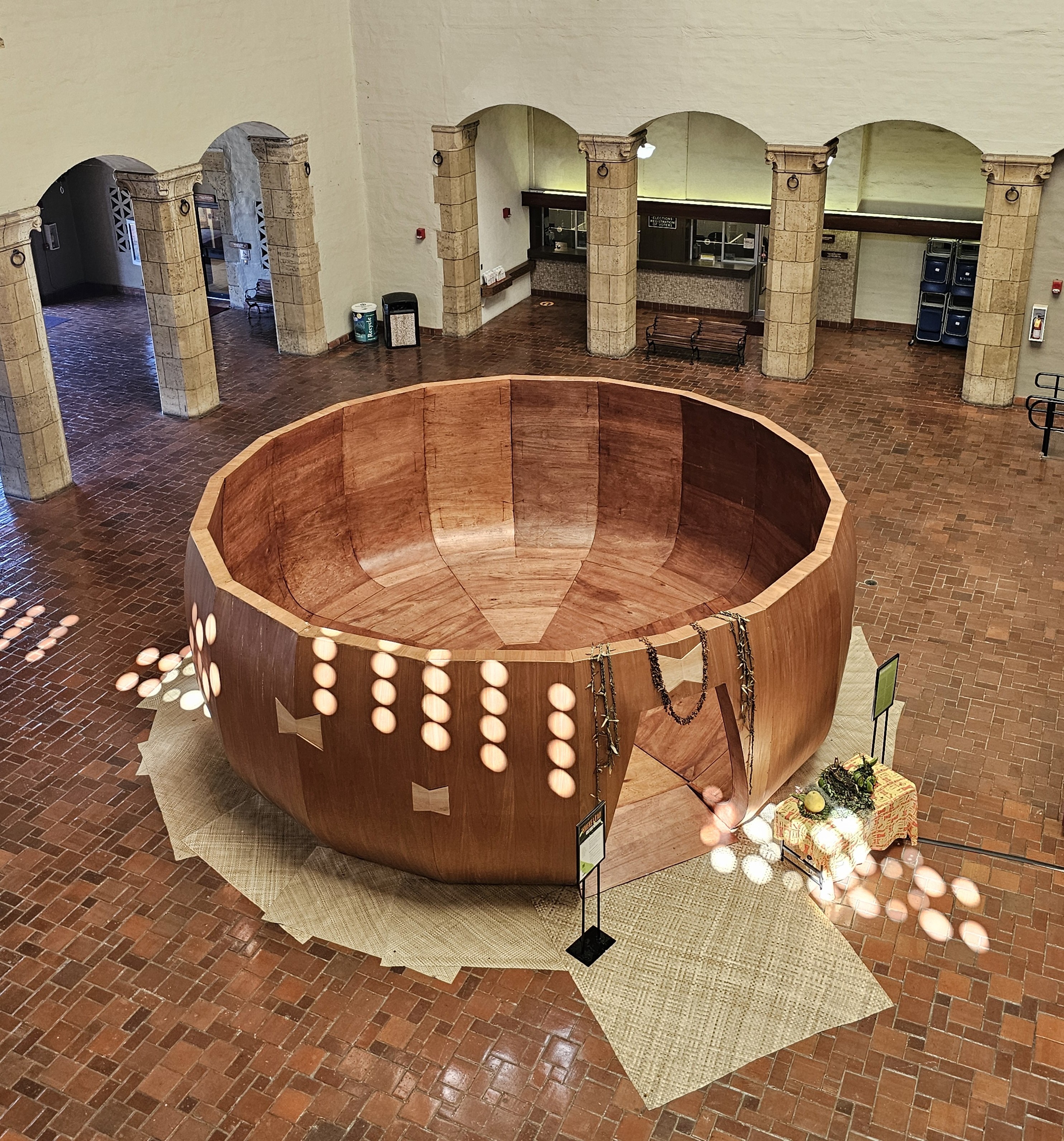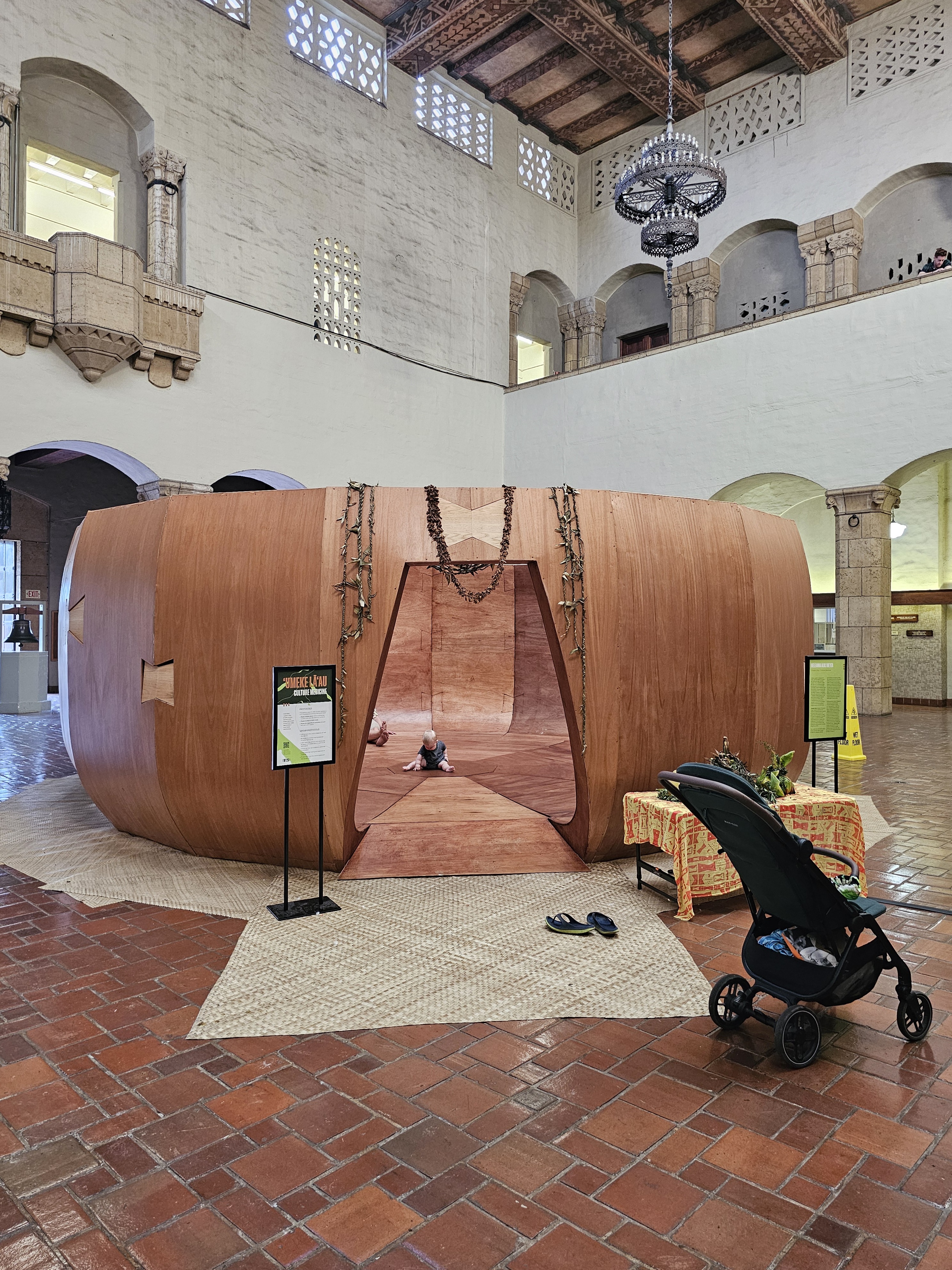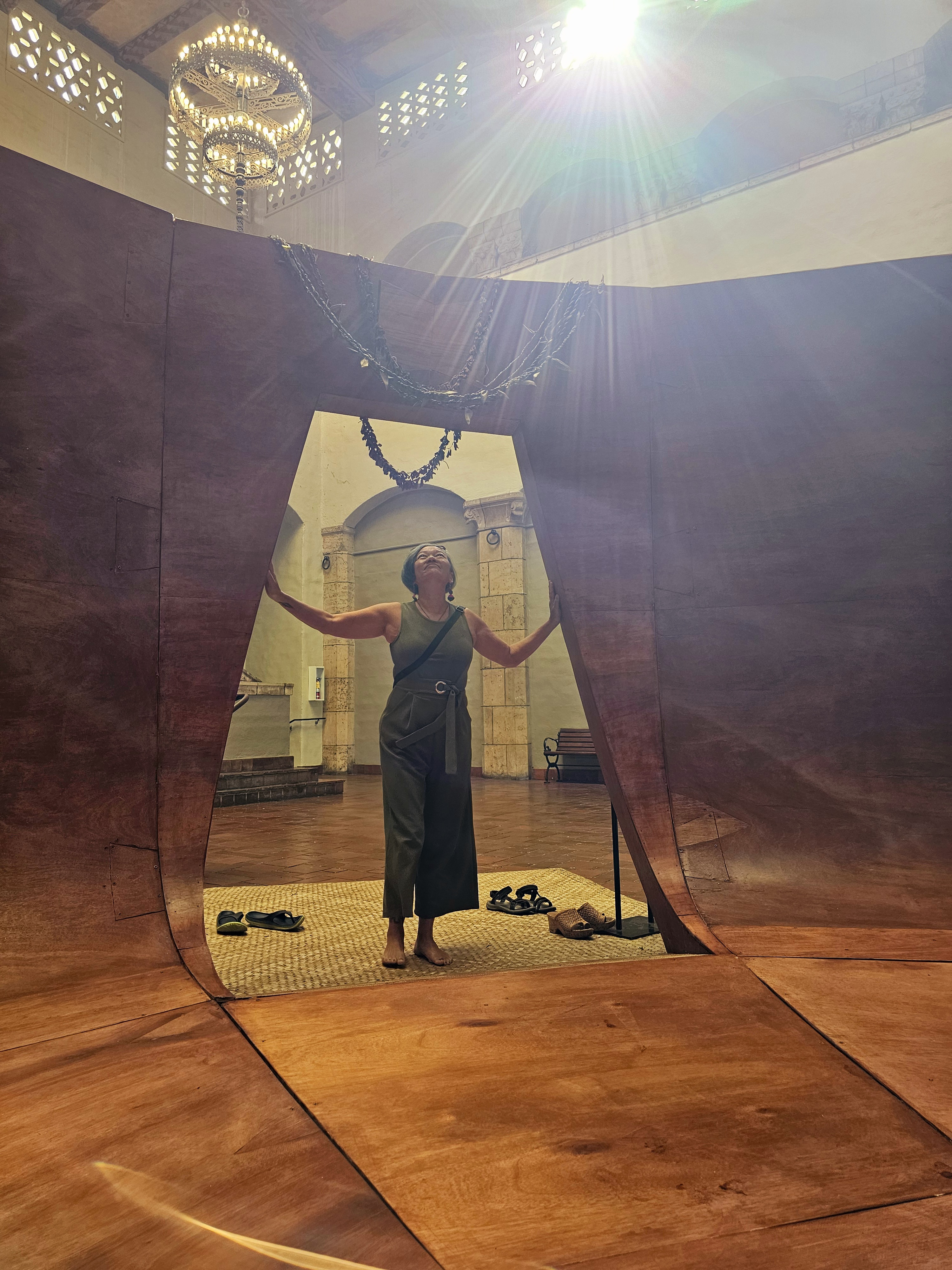28 May 2025 | Eliza Encheva-Schorch
"’Umeke Lā’au: Culture Medicine": A transformative piece at the Hawai’i Triennial 2025
In times of political upheaval and cultural turmoil, transformative spaces and interventions that are easily accessible seem rare — and more needed than ever. Multimedia artist Meleanna Aluli Meyer's site-specific installation "ʻUmeke Lāʻau" is such a powerful intervention. As a giant, 22-foot-wide and 8-foot-tall wooden bowl, it is an interpretation of the traditional Hawaiian ʻumeke, which usually holds food, water, or sacred offerings.
Meyer's one-of-a-kind sculptural calabash, or "Culture Medicine," has been installed in the foyer of Honolulu Hale (City Hall) since the opening of the Hawai'i Triennial in February 2025. In line with this year's Triennial theme ALOHA NŌ, the curatorial team commissioned the piece to be geared towards healing and resilience. Envisioned by Meyer, it was built by Team ‘Umeke, which included Amber Khan and Kainoa Gruspe as well as students of Honolulu Community College and the University of Hawaiʻi at Mānoa. Needless to say, the ʻUmeke is all about pilina and mālama: It symbolizes relations as communal effort and care, on all levels and during all stages of conception, production, and use.
 Meleanna Aluli Meyer's sunlit "ʻUmeke Lāʻau: Culture Medicine" at Honolulu Hale. Photo: Eliza Encheva-Schorch, March 2025.
Meleanna Aluli Meyer's sunlit "ʻUmeke Lāʻau: Culture Medicine" at Honolulu Hale. Photo: Eliza Encheva-Schorch, March 2025.
I visited the ʻUmeke in March 2025 with my husband and our baby boy. It stood in the centre of Honolulu Hale's foyer in a bewildering, yet grounded way — as if a UFO had landed on foreign lands and had become part of the scenery. Standing firmly on its own, it was oddly but perfectly integrated into the Hale. It did not only transform the colonial-style governmental building from a place of daily business into a site of art and novelty but also into a place of reverence and introspection. It somehow transformed all of us who walked through its altar-shaped entrance.
 Inside the ʻUmeke. Photo: Eliza Encheva-Schorch, March 2025.
Inside the ʻUmeke. Photo: Eliza Encheva-Schorch, March 2025.
Entering this enclosed yet open space, made with such rigor and care, silenced my mind in a way hardly any meditation could do. I was simply present, feeling both grounded and uplifted. Resting there and soaking in the atmosphere, I noticed the ʻUmeke had the same effect on 7-month-old Noa. He evidently enjoyed sitting and crawling on its warm wooden floor as much as I enjoyed leaning on its sides. Time expanded and contracted. I felt my pulse slowing down and my nervous system shifting to parasympathetic mode. I was at peace. I simply "was".
I cannot say how long we were inside the 'Umeke. Linear "time" — an abstraction of the mind — was irrelevant. Inspecting its surface with such focus and stillness, Noa quietly played there for what seemed like half an hour. He did not whine for a moment, and a part of me felt a difficult-to-grasp yet relaxing sense of coming home, as if we could stay in this giant bowl of light forever. The ʻUmeke's physical structure and energetic body felt both foreign and familiar, relaxing and invigorating. It was transformative in a simple, powerful way.
I observed the people around me. Daily business was still going on at the Hale, but in a very calm way. Some people were almost whispering, others were standing on the upper floor, quietly looking down on the 'Umeke. No one seemed to be left untouched by its presence.
 Noelle M.K.Y. Kahanu, co-curator of the thought-provoking Hawai'i Triennial ALOHA NŌ. Photo: Eliza Encheva-Schorch, March 2025.
Noelle M.K.Y. Kahanu, co-curator of the thought-provoking Hawai'i Triennial ALOHA NŌ. Photo: Eliza Encheva-Schorch, March 2025.
During our visit, the 'Umeke was beautifully lit by the sun rays which entered the building, playfully caressing the calabash. When Noelle M.K.Y. Kahanu, one of the curators of the 2025 Triennial, entered its ahu-like opening, the 'Umeke was almost magically illuminated. "The ʻUmeke has been requested by many different actors and places," she said, "but it needs to be deconstructed and put back together again each time. In June it is going to the west side of Oahu, to Kapolei Hale, and then to Maui, Lāhainā."
Noelle further explained to us that part of the piece was an audio installation listing the 38.000 names of the people who signed the 1897 petition against the annexation of Hawai'i. "Pretty much everybody's ancestors," she added. And so I listened. Once I knew, the names became audible. Shivers went down my spine. It was our next-to-last day on the Islands, and again I was reminded of Hawai'i's violent, not-so-distant past.
"We wanted to commission a piece that evokes resilience and healing," said Noelle. And Meleanna Aluli Meyer's awe-inspiring intervention really does seem to provide continuity and healing, or "Culture Medicine", as its subtitle suggests. It has been used as a ritual and meeting space by City Hall officials, hula dancers, artists, Honolulu Police Department officers, tourists, and members of the public. May it continue to subtly but firmly do its magic on Oahu, Maui and elsewhere in the world. "Amama ua noa," as one might say in Hawaiian: The taboo is lifted. It is free.

